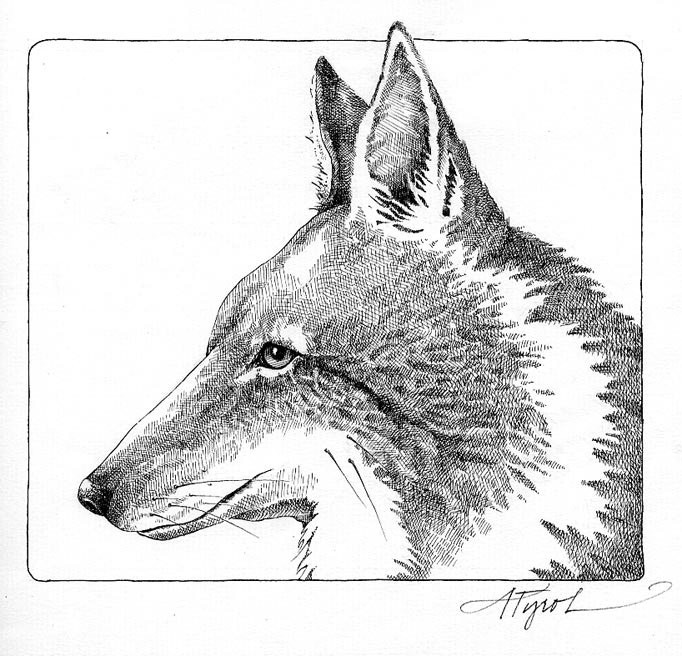
In recent years, the crepuscular wailing of coyotes has become as much a part of autumn in Vermont and New Hampshire as falling leaves and wood smoke. But coyote voices are not music to everyone’s ears. Deer hunters, in particular, often view coyotes as unwelcome competitors and associate their howling with a lost prize.
“Coyotes howl to communicate with each other, not to hunt,” says Susan Morse, founder and director of Keeping Track in Huntington, Vermont, who has spent many years studying them in the wild. “Calls are often between mothers and pups of the year. It’s ludicrous to think that the howls in the night are some sort of pre-kill call-to-arms. Predators know better than that. Secrecy and stealth are key.”
Depending on the season and food availability, coyotes eat a wide variety of foods, including rabbits, insects, squirrels, muskrats, songbirds, poultry, beavers, woodchucks, and deer. In wetter areas, coyotes will partake of frogs, turtles, snakes, lizards, and crayfish, with small rodents, including mice and meadow voles, always on the menu.
“Coyotes eat just about anything,” says Charles W. Johnson, Vermont’s retired state naturalist. “They’re like a big version of the fox.” In fact, when food is scarce, coyotes have been known to kill red foxes living within their home range in order to decrease the competition for food.
“Coyotes are opportunistic and omnivorous with a capital “O,” and their effect on deer can vary by place and season, and from year to year,” says Morse. “They eat a lot of berries in summer: cherries, viburnums, huckleberries, blueberries, and raspberries. The red dripping from a coyote’s mouth isn’t necessarily blood: just as often, it’s berry juice.”
Morse says, “Coyotes sometimes hunt alone, sometimes with a few together in family groups. In northern New England, coyotes have evolved social behaviors to help them hunt larger game.”
After the snow falls, coyotes spend long periods of time resting to save scarce energy reserves. When they do hunt, they conserve energy and avoid breaking new trails in deep snow. Coyote tracks often follow snow trails that have been established by deer or hares, even matching deer tracks print-for-print and traveling in single file.
Hares and rabbits are important coyote foods in winter, a time when coyotes may eat three times more carrion, in the form of deer, moose, and domestic animals, than in summer. Most of the time, coyotes catch individual or lone animals that are smaller, slower, and weaker than other members of their group.
“In habitat with deep snow and during long, cold winters, when temperatures routinely dip to 20° to 30°F below zero, deer are of necessity confined to deer winter range areas, and this can invite coyote predation,” Morse says. “In winter, and near the end of winter and early spring, the deer that aren’t doing well aren’t going to make it anyway. They’ll likely starve and then be eaten by a coyote. And there’s no question that coyotes also successfully kill other deer on the winter range.”
Deer populations, like those of coyotes, are largely determined by available food and not just by the forces of predation. When there is an ample food supply, deer populations will remain healthy despite predation from coyotes.
Jonathan G. Way of Boston College’s department of environmental studies, who has extensively researched coyote behavior in southern New England, has observed that, “Coyotes hunt the most vulnerable animals, which tend to be fawns and older deer. But something that makes a prime deer susceptible, such as a wound from a gunshot or collision with a car, can make that animal vulnerable as well. However, killing a large mammal like a deer is not an easy undertaking. Rather, it is dangerous, and, likely, some coyotes die from these attempts.”
According to Way, hunting coyotes can upset their population balance, and not in the way most hunters expect. “Coyotes live at low densities, probably in groups of 3 to 4 in well over 10 square miles in the North Country. Killing coyotes actually opens up a territory for others. We have evidence on Cape Cod that doing that can actually cause an increase in coyote numbers in a local area as an unguarded territory is claimed by more than one group.” Because coyote populations are food-limited, killing coyotes simply invites new coyotes to move in and take over the food supply.
Says Morse: “People are a menace to deer insofar as our thoughtless development patterns and irresponsible logging practices can remove and/or degrade deer habitat considerably. In so doing, we render deer more susceptible to predation by coyotes and, just as often, our own domestic dogs. It behooves us, therefore, to conserve adequate quality habitat for deer so that the impact of predation is more natural and balanced.”

